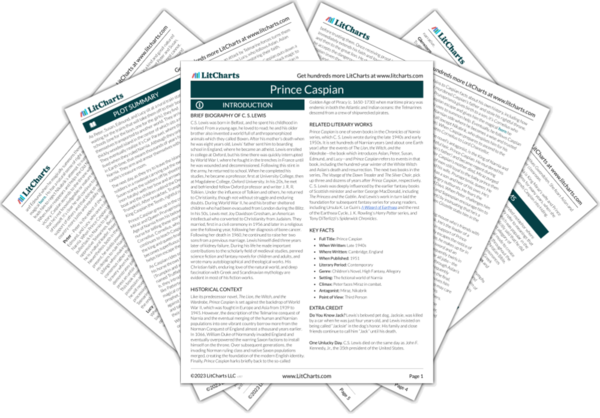In the
Chronicles of Narnia’s Christian allegory, Aslan represents Jesus Christ, and the feelings Lucy has toward him—a mix of adoration, affection, and trust—thus represent what the book imagines as the proper attitude of Christians toward their God and his representatives. Aslan’s warm greeting back to Lucy shows how much he loves her and how deeply he invests himself in her wellbeing. It also, importantly, rewards her faith and trust in him. This isn’t to say that Lucy can’t disappoint Aslan; if the others need to remember (or discover) their faith, Aslan teaches Lucy that she needs the courage to follow her faith even when others don’t support it.


